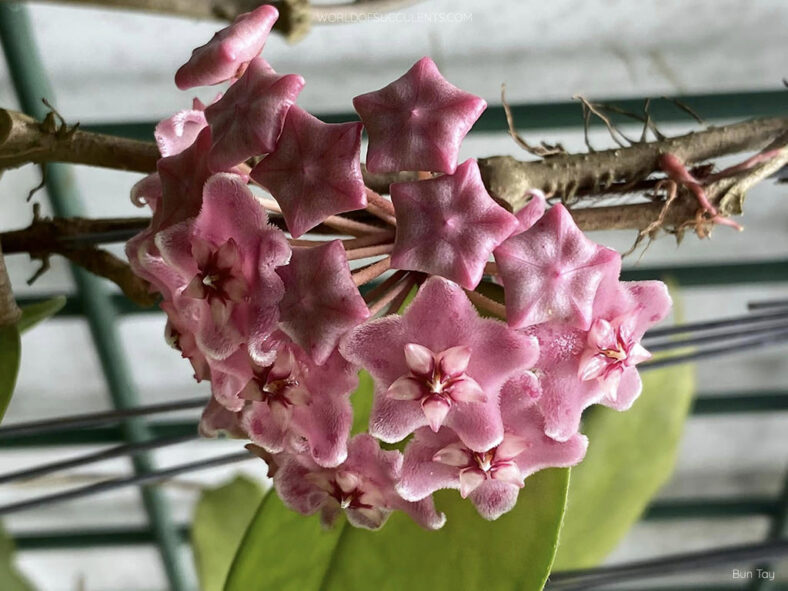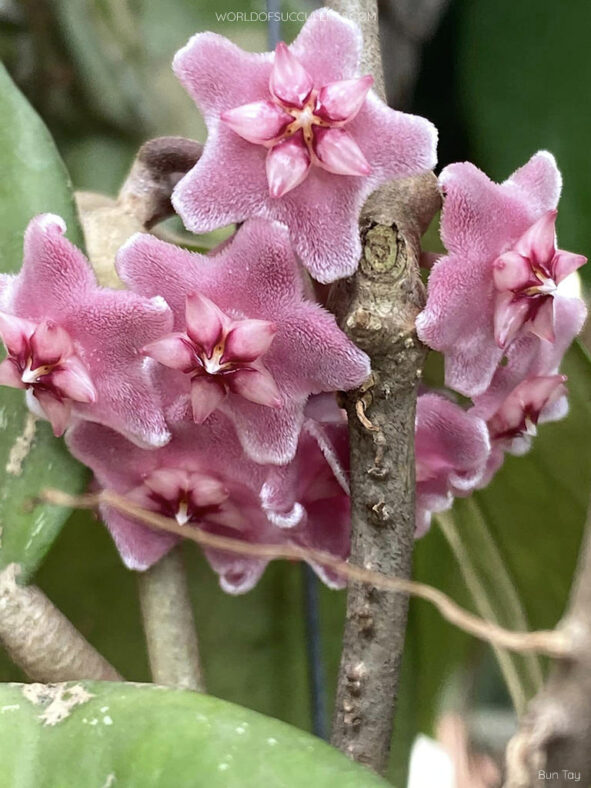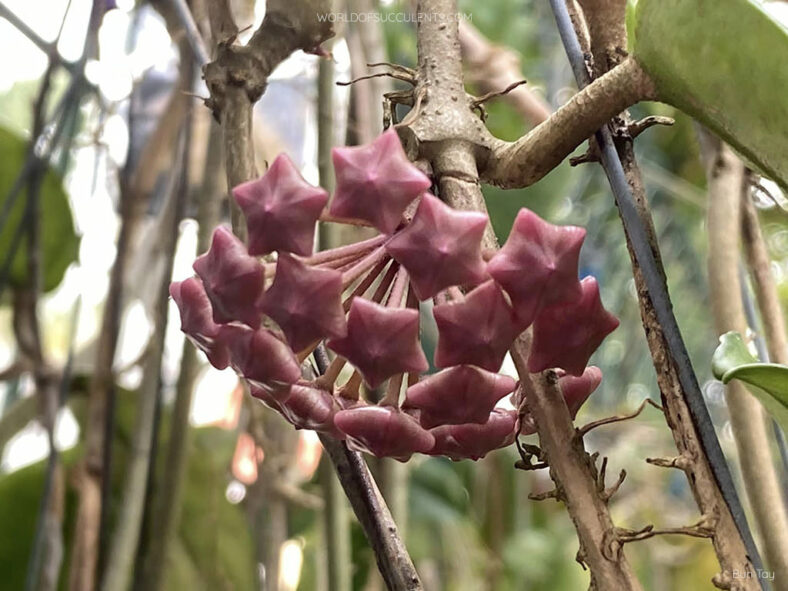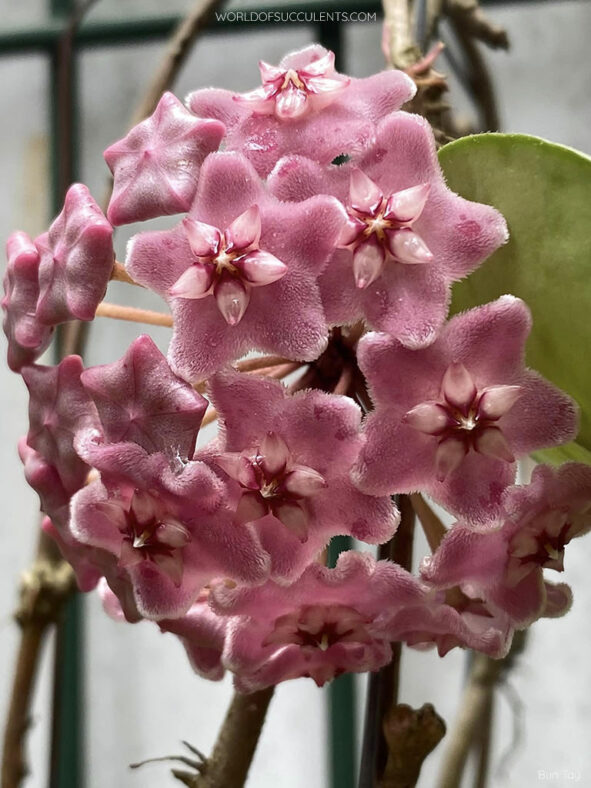Hoya fungii is an excellent choice for those who want a fast-growing and easy-to-care-for Hoya plant. It is also a quick bloomer and produces beautiful flowers similar to Hoya carnosa.
Scientific Name
Hoya fungii Merr.
Scientific Classification
Family: Apocynaceae
Subfamily: Asclepiadoideae
Tribe: Marsdenieae
Genus: Hoya
Etymology
The specific epithet "fungii" (pronounced FUNG-ee-eye) honors Hom Fung, a Chinese botanist who collected a specimen of this species in the 1930s.
Origin
Hoya fungii is native to southern China (Guangdong, Guangxi, Hainan, and Yunnan), Vietnam, and Laos. It grows as an epiphyte in open woods at elevations ranging from 985 to 3,280 feet (300 to 1,000 m).
Description
Hoya fungii is a beautiful plant with climbing stems that bear pale green leaves adorned with dark green veins. The stems can grow up to 6.6 feet (2 m) long, while the leaves are ovate to elliptical and can measure up to 8 inches (20 cm) in length and 3.6 inches (9 cm) in width.
From spring to fall, Hoya fungii produces fragrant, star-shaped flowers that can reach a diameter of 0.7 inches (1.7 cm). The flowers have a sweet-smelling fragrance and appear in umbels of up to 60, lasting up to 10 days. The corolla is fuzzy inside and typically white but may vary from pure white to dark rose pink, depending on temperature and light levels. The corona lobes are yellowish to pinkish and dark red near the base. The fruits are smooth, lance-shaped follicles that can grow up to 4.8 inches (12 cm) long and 0.3 inches (0.8 cm) wide.

How to Grow and Care for Hoya fungii
Light: It is best to keep this plant indoors in bright, indirect sunlight. Even though it can tolerate lower light levels, it may become weak and leggy if the light is too low, producing fewer leaves and flowers.
Soil: Well-draining soil that provides excellent aeration and does not hold too much water is most important for growing a healthy plant.
Temperature: Hoya fungii thrives in hot and humid climates, so keep it away from drafty windows and doorways during the colder months. It grows best in USDA Plant Hardiness Zones 11a to 11b, with average minimum winter temperatures ranging from 40°F to 50°F (4.4°C to 10°C).
Watering: Since this plant is sensitive to overwatering, soak the soil thoroughly in spring and summer, but allow it to dry out before watering again. Otherwise, you will increase the risk of root rot, and your plant will not be happy. It is relatively dormant during the fall and winter and needs only moderate watering.
Fertilizing: Although Hoya fungii is not a particularly heavy feeder, it can benefit from a high-potassium fertilizer diluted to half-strength every two weeks during the growing season.
Repotting: As an epiphyte, this plant has a shallow root system and needs a deep container. It also does not require frequent repotting. It prefers to be slightly root-bound, so repot it in spring only if it has outgrown its container.
Propagation: Although layering is the easiest way to propagate Hoya fungii, using stem cuttings is the most popular method. Using leaf cuttings can be more challenging, while starting it from seeds is the simplest but the most time-consuming method. For best results, take cuttings only when the plant is actively growing. Sow seeds in spring and summer.
Learn more at How to Grow and Care for Hoya.
Toxicity of Hoya fungii
Hoya fungii is considered non-toxic, so it's safe to have around kids and pets.
Links
- Back to genus Hoya
- Succupedia: Browse succulents by Scientific Name, Common Name, Genus, Family, USDA Hardiness Zone, Origin, or cacti by Genus
Photo Gallery
Click on a photo to see a larger version.


